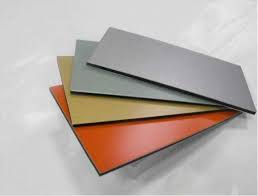Understanding the difference between ALUCOBOND and ACP is essential for architects, builders, and homeowners looking to make informed choices in construction materials. Both materials have become widely used in modern architecture for their durability, aesthetic appeal, and functional benefits. But are they truly interchangeable, or do they have unique characteristics that set them apart?
Origins and Branding Distinction
ALUCOBOND is a specific brand name that has become synonymous with high-quality aluminum composite panels. It was developed by 3A Composites and has since set a benchmark in the industry for its innovation and reliability. ACP, on the other hand, stands for aluminum composite panel in a generic sense and can refer to any product within this category from various manufacturers.
This distinction is crucial because while all ALUCOBOND panels are ACPs, not all ACPs meet the stringent standards associated with ALUCOBOND. The reputation of ALUCOBOND stems from its consistent quality control and technological advancements, making it a preferred choice for premium architectural projects. ACP, as a broader category, encompasses a range of quality levels depending on the manufacturer and region of production.
Material Composition and Layers
The core structure of both ALUCOBOND and standard ACP panels involves a layered design combining aluminum sheets with a core material. ALUCOBOND typically uses a fire-retardant or non-combustible core, emphasizing safety and compliance with global building standards.
ACP panels, while structurally similar, can vary significantly in core materials. Some lower-cost ACP products may use polyethylene cores, which are less fire-resistant, raising safety concerns in high-rise structures or public buildings. ALUCOBOND’s focus on fire resistance adds a critical layer of safety, making it ideal for projects with stringent regulations.
The thickness and grade of the aluminum sheets themselves also differ. ALUCOBOND uses premium aluminum alloys, ensuring better resistance to environmental stressors like UV radiation and moisture. Generic ACP panels may use thinner or lower-grade aluminum, which could impact longevity and appearance over time.
Durability and Performance
Durability is a defining factor when comparing ALUCOBOND and generic ACP panels. ALUCOBOND is renowned for its exceptional weather resistance, capable of withstanding extreme temperatures, UV exposure, and humidity without significant degradation. This resilience makes it a top choice for external cladding on skyscrapers and commercial buildings.
ACP panels, depending on the manufacturer, might not always meet the same performance standards. While some premium ACP brands offer excellent durability, lower-cost versions can suffer from issues like delamination, color fading, or corrosion over time. The superior quality control in ALUCOBOND panels ensures consistent performance across its product line.
Aesthetic Versatility
Both ALUCOBOND and ACP panels offer impressive aesthetic versatility, but ALUCOBOND takes it a step further with a broader range of finishes and textures. From solid colors and metallic hues to natural stone and wood effects, ALUCOBOND provides a vast palette for architects and designers seeking creative freedom.
Standard ACP panels also offer design flexibility but might be limited in the diversity and quality of finishes. ALUCOBOND’s proprietary coating technologies contribute to enhanced color retention and scratch resistance, ensuring a lasting visual impact on architectural facades.
Cost Considerations
Cost plays a significant role in material selection, and it’s one area where ACP panels often hold an advantage. Generic ACP panels can be significantly more affordable than ALUCOBOND, making them suitable for budget-conscious projects where premium durability or aesthetic perfection isn’t the top priority.
However, the lower price point can sometimes come with trade-offs in quality, longevity, and safety features. ALUCOBOND, while more expensive upfront, may offer better value in the long run due to its durability, reduced maintenance costs, and compliance with strict safety standards.
Applications and Use Cases
ALUCOBOND has firmly established itself as a go-to choice for high-end commercial and residential projects. Its superior durability and premium finishes make it ideal for landmark buildings, airports, luxury hotels, and modern skyscrapers. Architects often prefer ALUCOBOND for projects where both performance and aesthetics are non-negotiable.
ACP panels, while versatile, are commonly used in smaller commercial buildings, signage, and interior applications where budget constraints may be more pressing. The broader ACP market also includes panels suited for temporary installations or less demanding environments where high-end performance is not critical.
Fire Safety and Regulations
Fire safety is a critical factor in cladding materials, and it’s here where ALUCOBOND often outshines many generic ACP options. ALUCOBOND’s focus on fire-retardant cores makes it compliant with international fire safety standards, reducing the risk of fire propagation in tall structures.
ACP panels, particularly those with polyethylene cores, have faced scrutiny in past fire incidents, emphasizing the importance of core material selection. Choosing ALUCOBOND for high-rise structures ensures not only aesthetic excellence but also peace of mind regarding occupant safety.
Final Verdict: Choosing the Right Panel
While both ALUCOBOND and ACP panels serve the same fundamental purpose, their differences in quality, performance, and safety standards make ALUCOBOND a standout choice for premium applications. ACP panels remain valuable for budget-friendly projects where safety and durability requirements are less critical. The choice ultimately depends on the project’s scale, safety priorities, and aesthetic demands.
